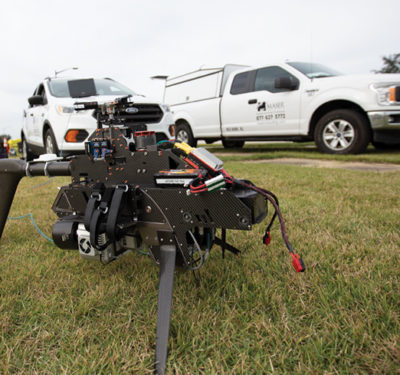According to the Department of Defense, on December 2, Secretary of Defense Lloyd J. Austin III signed a classified Strategy for Countering Unmanned Systems. The strategy unifies the Department’s approach to countering unmanned systems that looks across domains, characteristics, and timeframes.

The DoD statement says that by producing a singular Strategy for Countering Unmanned Systems, the Secretary and the Department are orienting around a common understanding of the challenge and a shared approach to addressing it.
The statement continues:
The strategy builds on other major DoD initiatives, including the standup of the Joint Counter-Small UAS Office, the establishment of a Warfighter Senior Integration Group to meet urgent operational needs, and the launch of the Replicator 2 initiative to defend against the threats of small aerial systems at critical installations and force concentrations. The recent designation of the Commanders of NORTHCOM and INDOPACOM as the lead synchronizers for operations to counter-UAS in the homeland also ensures a cohesive approach to this challenge.
The Strategy for Countering Unmanned Systems helps set the Department’s gaze beyond the “five-meter target” to threats we may see in the future, acknowledging the rapid evolution of these capabilities.
Secretary of Defense Lloyd J. Austin III stated, “In recent years, adversary unmanned systems have evolved rapidly. These cheap systems are increasingly changing the battlefield, threatening U.S. installations, and wounding or killing our troops. To get after this threat, I directed the swift development of a classified, comprehensive, Department-wide strategy. It lays out a roadmap for countering the threat of adversary unmanned systems – today and far into the future. Drones and other unmanned systems will increasingly transform the security environment. Tackling these threats will not be easy. But the United States military is unrivaled in our ability to adapt to new challenges, and the Department is moving out on making this strategy’s vision a reality. The character of war is changing, and we will change with it.”
To mitigate the effects of unmanned systems over the near-, mid-, and long-term, the strategy articulates five “strategic ways,” each of which provides specific direction that the Department will pursue in implementation. They are:
Deepen our Understanding and Awareness of Unmanned Systems Trends and Threats. The Department will “sense and make sense” of threats that unmanned systems pose, including by gaining a greater understanding of unmanned systems threats and by improving the ability of our operational forces to detect, track, and characterize these threats.
Disrupt & Degrade Unmanned Systems Threat Networks. The Department will address the threat networks that drive the development and proliferation of unmanned systems whenever possible, including by launching and executing deliberate campaigns to counter these networks, in partnership with other U.S. departments and agencies.
Defend Against Unmanned Systems Threats to U.S. Interests. The Department will adapt fully to defending against unmanned systems as a core element of warfighting, including by: improving our active and passive defenses; clarifying, streamlining, and delegating authorities, as needed; and institutionalizing approaches across doctrine, organization, training, materiel, leadership, personnel, facilities, and policy.
Deliver Solutions with Greater Speed, Adaptability, and Scale. The Department will deliver robust counter- unmanned systems at speed and scale, including by leveraging rapid acquisition approaches; prioritizing integrated, open, modular solutions; employing systems engineering and predictive analytics; reducing the cost imbalance between unmanned systems and countermeasures; expanded budget agility; increasing experimentation; creating conditions for rapid and realistic testing; and maximizing exportability, co- development, and co-production of capabilities with our closest allies and partners.
Develop & Design the Future Joint Force for Unmanned Systems-Driven Ways of War. The Department will make countering unmanned systems a key element of our thinking about future force development and design, including by pursuing changes to our force structure, employing our forces differently, and seeking technologies that could enable us to offset adversary advantages.
The DoD has released an unclassified fact sheet with more information.






